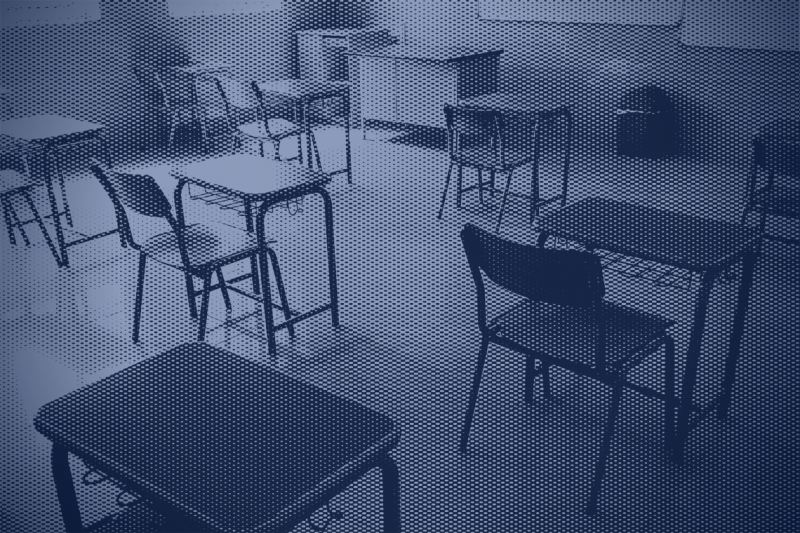
Research from Duke University and UNC-Chapel Hill suggests that schools can consider returning to in-class instruction if they mitigate COVID-19 transmission on campuses, despite the level of COVID-19 cases occurring in the community, especially when students, teachers and staff consistently wear masks, wash their hands, and practice physical distancing as recommended by the Centers for Disease Control (CDC).
Duke and UNC researchers evaluated the secondary transmission of COVID-19 in 11 North Carolina school districts that held in-person instruction in the first nine weeks of the 2020-2021 school year and identified minimal COVID-19 transmission in the schools -- much lower than the rate of community spread.
 Danny Benjamin, MD, PhD
Danny Benjamin, MD, PhDThe study, which was recently published in Pediatrics, found there were few cases of transmission within schools. The study was conducted by the ABC Science Collaborative, which is led by the Duke Clinical Research Institute (DCRI), part of the Duke University School of Medicine.
These findings were cited Tuesday in a separate viewpoint released by researchers at the CDC and published in the journal JAMA. The CDC called for children to return to classrooms, stating that evidence demonstrates in-class instruction can be implemented safely if CDC guidelines are followed.
The ABC Science Collaborative consists of scientists from both the Duke University School of Medicine and UNC-Chapel Hill, as well as partnering school districts from across North Carolina. The collaborative was formed to help school leaders make informed decisions about returning to school using data from their own communities. The ultimate goal of the program is to keep teachers, children, and their local communities healthy and safe. The collaborative also offers education to school staff and parents on COVID-19 prevention and transmission.
 Kanecia Zimmerman, MD
Kanecia Zimmerman, MDThe study included data from 11 of the partner school districts that were open for all nine weeks of the first quarter and agreed to track both COVID-19 case count and secondary transmission for research purposes. From these districts, which included over 90,000 students and staff attending in-person instruction, there were 773 cases acquired from the community. In contrast, contact tracing from the state health department identified only 32 infections that were acquired within schools through secondary transmission.
“During the study timeframe, we saw significant community spread of COVID-19,” said DCRI pediatrician Dr. Danny Benjamin, co-chair of the ABC Science Collaborative. “If we’d seen the same rates of secondary transmission in the schools as we were seeing in the community, we would have expected between 800 and 900 secondary infections. However, we saw only 32. This indicates that it is possible for schools to safely remain open in communities with widespread community transmission.”

“The low rates of transmission seen in this study underscore the participating districts’ commitment to following the collaborative’s 12 Principles for Safer Schools,” said DCRI pediatrician Dr. Kanecia Zimmerman, co-chair of the ABC Science Collaborative. “These data highlight the efficacy of measures such as frequent hand-washing and continuous face mask-wearing.”
This work was funded by the Trial Innovation Network, which is an innovative collaboration addressing critical roadblocks in clinical research and accelerating the transition of novel interventions into life-saving therapies sponsored by NCATS (5U25TR001608-05) and National Institute of Child Health and Human Development (NICHD) contract HHSN275201000003I)
This article was first published in Duke Today